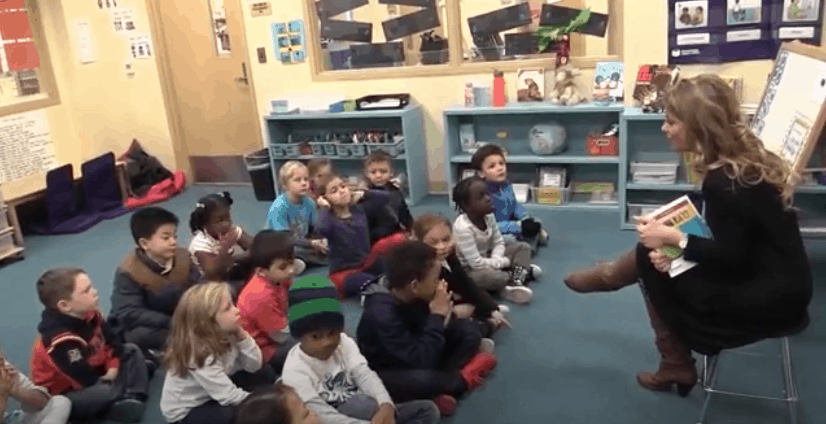
Schools will face different requirements at different times depending upon the prevalence of COVID-19 in their communities, ranging from bringing students back to classrooms with social distancing and other safety measures in place (North Carolina’s plan B) to continuing with full time distance learning (plan C). Operating under plan B involves strict requirements like health screenings, social distancing, masks, and frequent sanitizing, along with restrictions on students sharing, hands-on activities, group gatherings, and extra-curricular activities.
The resulting changes in these schools will have adverse effects for students and teachers, especially those in the early grades. Consider, for example, what you might see during a visit to a pre-COVID first grade classroom during reading instruction, as compared to the same classroom with the COVID-19 prevention requirements.
Entering the pre-COVID classroom, you immediately see the walls colorfully decorated with posters of storybook characters, children’s artwork, displays of letters and numbers, and whiteboards with color markers. Child-size tables and chairs are arranged to have the 20 children sit in small groups. Bookcases hold books grouped by reading level, along with games, letter and number blocks, art and building materials, and digital tablets used for interactive games and stories. The children are guided by the teacher, a teaching aide, and parent volunteers who tutor children needing extra help.
To begin reading time, the children gather closely together on the floor, facing the teacher as she expressively reads the Cat in the Hat, showing the pictures on each page. The teacher pauses to ask, “Have you ever had a surprise visit from a person or animal?” which the children discuss in pairs, and then the teacher asks some to share their responses with the class. By the time Thing 1 and Thing 2 appear in the story, the children giggle contagiously and comment to each other, as some squeeze together or hold hands with friends.
The children then move to small groups, each at a table with a different activity. At one table, children work together to find sets of rhyming words from the story — ball, all, call, fall; bump, jump, thump; and many more. At other tables, children divide words into syllables, learn common phonetically irregular “sight” words such as you and two, and using the digital tablets to play a game to help them distinguish commonly confused letters, such as b, d, and p.
In the reading corner, pairs of children select books to read aloud together, helping each other figure out new words. The energy and joy in the room are palpable, with the teacher or aide responding quickly whenever children need help, delivered with a warm smile and a reassuring hand on the child’s shoulder. (A video of teachers and students engaged in these types of activities is available here.)
In the post-COVID classroom, the walls remain well decorated but everything else has changed. Child-size chairs with attached desks are spaced six feet apart. All the shared materials have been removed since they cannot be sanitized between uses. The classroom has space for only 10 children, so children attend school on alternating weeks, with work sent home for the intervening time. The teacher and aide wear masks; other volunteers are not permitted in the classroom. Each child has a digital tablet, notebook, and pencils on their desk, all of which they take home and cannot share.
The teacher reads the story and asks questions from the front of the room, but her mask and the distance between everyone limit the teacher’s expressiveness and the children’s engagement. The guidelines prohibit children from working together, so everything is either a whole class or an individual activity. When a child needs help, the teacher or aide walks to their desk but any smiles are hidden behind their masks and they must remember not to touch the child. The energy, the laughter, the joy, and the learning are far from what was seen in the same classroom pre-COVID.
Several things need to be done to support students and teachers during this difficult period. First, everyone involved must accept the reality of balancing virus mitigation and sound educational practices, and the difficult decisions schools must make as a result. Second, communities must have coordinated efforts to support children’s learning outside of school, such local organizations providing space, technology access, resources, and staff to help students learn beyond the classroom walls. Third, community efforts need to focus on students whose families are unable to provide sufficient support for their learning at home.
Finally, everyone must recognize the dedicated efforts of educators on behalf of their students, educators who thereby join medical practitioners and many others as heroes of the COVID-19 crisis.
Recommended reading



